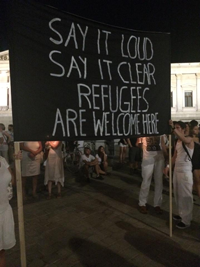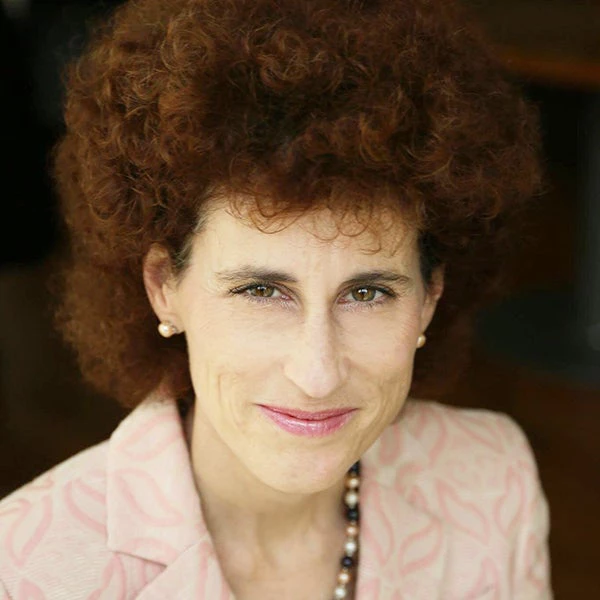 I am the World Bank’s Director for the Western Balkans, and I live in Vienna, Austria, where thousands of refugees, mostly fleeing from conflict in Syria and Afghanistan, are now straggling across the border from Hungary after harrowing trips on crowded boats, uncomfortable stays in makeshift camps, cramped bus rides and long journeys on foot when all else fails.
I am the World Bank’s Director for the Western Balkans, and I live in Vienna, Austria, where thousands of refugees, mostly fleeing from conflict in Syria and Afghanistan, are now straggling across the border from Hungary after harrowing trips on crowded boats, uncomfortable stays in makeshift camps, cramped bus rides and long journeys on foot when all else fails.
My father’s parents were refugees to America. They were Jewish peasants from Russia who fled the pogroms of the early twentieth century. My mother’s great-grandparents were economic migrants, educated German Jews who went to Chicago in the mid-nineteenth century to seek their fortune in grain futures and real estate. When my parents married in the early 1950s, theirs was considered a “mixed marriage”: Russian and German; peasant stock and educated elite; refugees and economic migrants. I know the difference between the latter two: refugees are pushed out of their home countries by war, persecution and a fear of death; economic migrants are pulled out of their home countries by the promise of a more prosperous life for themselves and their children.
The European Union has been absorbing economic migrants long before the recent surge in refugees. In the past twenty five years, many of these migrants have been from the countries of the Western Balkans, where I work with my World Bank colleagues to support faster growth and job creation. In 2014, forty-five percent of those seeking asylum in Germany were economic migrants from the Western Balkans, with the largest numbers from Kosovo and Albania. In the past, Balkan countries often made the international news for their own bloody conflicts, but now they are at peace and on the nightly news for a different reason: refugees from distant wars are favoring the “Balkan Route” into the European Union, through FYR Macedonia and neighboring Serbia, before finally entering EU member Hungary.
While the Balkan states are no longer generating their own refugees, they remain world champions of out-migration. Fully twenty-five percent of the source population of the Western Balkans resides outside their home countries, compared to only three percent for the rest of the world. Most are in European Union countries, with nearby Vienna being a preferred destination. I meet them every time I need a plumber, electrician or taxi in the city.
Out-migration has been of enormous benefit to the countries of the Western Balkans. Before the onset of the global and Eurozone crises of 2008, the Western Balkans grew by more than five percent per annum, leading to significant income convergence with the slower-growing European Union. Most of this growth in the Balkans was consumption driven, fueled by migrant remittances equaling as much as ten percent of national income each year, dwarfing foreign investment and aid flows. In the aftermath of the Eurozone crisis, as EU member states struggled with recession, out-migration from, and remittances to, the Western Balkans slowed, along with economic growth. Convergence with the EU ground to a halt. Ironically, the resulting lack of growth in the Western Balkans has only served to increase the desire of the young to migrate to the EU, even as the door to Europe has shut tighter with each year of weak recovery. Offering asylum to refugees fleeing violence may further shut the door to economic migrants from the “safe countries” of the Western Balkans.
With unemployment currently running between 40 and 65 percent of the young labor force in the Western Balkans, it is understandable that these countries rely on out-migration to stimulate growth and ensure social stability. And it is understandable that their populations and Governments would react warily when more young, unemployed workers—the refugees of war-torn Syria and elsewhere—start crossing their territory. But few, if any, refugees wish to stay in the small, poorer countries of the Western Balkans. The Government of Serbia has understood this, and thus far behaved maturely in welcoming refugees humanely and ushering them to the EU border, respecting EU policies regarding refugees and asylum seekers.
Even if you are not haunted by the picture of young Aylan Kurdi lying dead on a beach or a truck full of corpses on an Austrian highway, you should welcome the inflow of refugees to Europe on economic grounds. The EU needs people, especially young and healthy workers. Germany, for example, will see its labor force decline by 13 million workers in the next 25 years. With its aging and shrinking population, the country will need to welcome an additional 370,000 workers per year just to maintain the status quo. Germany’s future economic growth--and the sustainability of its old age security system—depend critically on this inflow. This partly explains Germany’s open arms to the current flow of refugees. But the story is similar in Hungary, where an additional 43,000 workers are needed every year to counteract the graying of society and stimulate economic growth. And while EU countries may prefer to pick and choose their migrants, it’s a good bet that refugees with the stamina and courage to flee their homes, face perilous sea crossings and exhausting over-land treks will prove to be highly motivated workers whose children will climb the ladder of economic success in their adopted countries--just as my grandparents and great-grandparents did in America.
It is heartening to see the welcome given to refugees by many in Germany and Austria in recent weeks, even as these countries brace for the costs associated with significant absorption. To some extent, history is repeating itself in Austria as refugees cross the border at Nickelsdorf. This crossing is the very same where thousands of East German refugees crossed into the West from Hungary when the iron curtain began to fall in 1989. Many Austrians take pride that their country has served as the entryway to a better life for so many refugees. Austria has served as an important transit point and destination for Cold War refugees in the past, including an estimated 180,000 from Hungary in 1956, 162,000 from Czechoslovakia in 1968 and 150,000 from Poland in 1981-82. And Austria was a continuous transit point for 250,000 Jewish refugees leaving the Soviet Union between 1973 and 1989, with tens of thousands remaining in Austria, mostly in Vienna. Between 1992 and 1995, 95,000 war refugees from Bosnia and Herzegovina were provided asylum in Austria. [i]
But Austrians also live with a darker history that generated refugees and allowed the slaughter of those not permitted to leave when Austria was annexed by Nazi Germany. Everywhere you walk in Vienna, you cannot escape the reminders of this past: the mansions of the wealthy Jewish families who financed construction of the Habsburg Emperor’s famous Ring Road but lost their lives in World War II; the narrow alleys of Leopoldstadt where Jews migrating from Eastern European crowded into Vienna in the nineteenth century only to face annihilation in the next century. When we see the contribution to the arts, sciences, politics and business of refugees from World War II—giants like Albert Einstein and Sigmund Freud--we can imagine what the world lost from those who were not allowed to live.
As I walk the stately streets of Vienna, I know deep in my core that the moral imperative to save human lives and give refugees asylum is sufficient. It is enough. The bonus for all of us is the long-term growth, prosperity and social security that refugees will bring to the aging populations and struggling economies of Europe. So let’s say it loud, say it clear: refugees are welcome here.


Join the Conversation